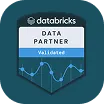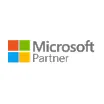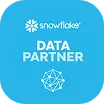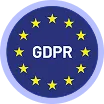Real-Time Brand Protection with Automated Web Monitoring


Whether every business should be selling its products online has gone from being a question to a certainty. In 2021, retail sales surged to $4.9 trillion a year globally, and that figure is expected to climb by an additional 50% over the next 4 years.
The Covid-19 pandemic forced whole populations to use online shopping on a daily basis, and the convenience of online e-commerce juggernauts like Amazon, eBay, Walmart, and others ensured these new users would be quickly converted into lifelong members.
While this mass online migration offers an incredible opportunity for online sellers, it is also a double-edged sword that copyright pirates, counterfeiters, and other brand abusers have quickly taken advantage of.
Brand abusers are becoming more sophisticated by the day and can cause lasting damage to a brand by stealing or misusing branded imagery, intellectual property, and proprietary data.
Although there is no permanent solution to stop abusers from unauthorized actions, many companies have implemented automated web monitoring strategies in order to discover and validate abuse cases in real time.
Empowered by data gathering tools, brands can vigilantly monitor the public web and identify brand abuse as it happens with high accuracy, reducing response times and minimizing damage to their brand.
Topics
- Brand abuse and its common forms
- Automated web monitoring
- The essential role of data platforms
Brand abuse and its common forms
Simply put, brand abuse is the unauthorized or illegal usage of a brand’s logo, mark, symbol, or other intellectual property by a third party to the end of falsely attracting customers of the brand. While brand abuse can take many forms, the most common are copyright infringement, counterfeiting, and social media impersonation.
Copyright Infringement, also commonly known as piracy, involves the illegal streaming or reproduction of copyrighted works. Abusers of copyright law take protected works, most commonly films or music, and distribute them without permission from the copyright holder.
Counterfeiting involves the unauthorized production and distribution of branded goods. Counterfeiters typically produce low-quality, cheap versions of a brand’s product in order to maximize their profits by taking advantage of brand awareness. Counterfeit goods can be sold at any number of online marketplaces, which makes tracking their sale very challenging.
Social Media Impersonation is a strategy by which an offender will create a page on a popular social media website such as Facebook, Instagram, Twitter, etc., and mimic the pages run by a genuine brand. This will often include the unauthorized use of a brand’s logo, name, images, or other intellectual property to deceive users into believing they are viewing a page run by the brand. The end goal of Social Media Impersonation is often to sell counterfeit goods or entrap users into phishing or other scams.
Due to its online nature, E-commerce is particularly attractive to brand abusers, who have several key benefits:
- Anonymity - abusers face a much lower risk of being detected or identified, and prosecuting them offline is also much more challenging.
- Flexibility - abusers can start operating with as little as a social media page, eBay or Amazon account, or even a Shopify store, which is fast, easy, and cheap to establish. Additionally, even if an abuser’s page is removed, they can restart quickly with slight modifications, transfer to another platform, or move their website to another jurisdiction where prosecution is more difficult.
- Reach - with over 4.9 billion daily users on the internet, abusers can reach an enormous potential audience.
- Fraud - abusers often create very convincing fake websites, social media pages/posts, or other online resources that trick users into believing they are interacting with the official brand.
Automated Web Monitoring
To effectively stop abusers, brands need to perform several key tasks:
- Monitor and get notified in real-time of potential abuses
- Validate that the abuse targets their brand
- Take action against the abuse (takedown offending websites/content, remove imposter social media accounts, etc.)
Monitoring the public web for abuse is the first step, but it’s also an incredible challenge. Data gathering platforms can help companies implement automated web monitoring, but to be effective, they must fulfill several fundamental requirements.
Scalability
To protect their brand, companies need to monitor some of the largest websites in the world. Abuses occur regularly on Facebook, Instagram, Amazon, and even mobile app stores. Industry-specific infringements can occur in a variety of fields, from media piracy to fashion product imposters to health and pharmaceuticals.
This means that brand protection companies need to be constantly searching for abuse in large (and constantly growing) swaths of data. A flexible and scalable data-gathering platform that can accommodate the influx of data and adapt to the company’s needs is essential.
Reliable Access
Brand abusers will typically operate across the globe, and since many websites will block or redirect users based on their geographic location, being able to access any website from any location on the planet is critical.
Additionally, abusers will attempt to circumvent the brand’s automated web monitoring efforts by identifying and blocking automated tools. Using data-gathering platforms that provide proper IP Infrastructure is crucial to getting past these barriers and ensuring smooth web data collection.
Performance
Time is of the essence in brand protection. Abusers can quickly delete, hide, or transform their content to evade punitive action. This means companies need to act quickly when they detect infringing materials.
Being confident that your data-gathering platform can handle the amount of data needed with high performance is critical to effective automated web monitoring.
The essential role of data platforms
Data platforms such as Nimble were built from the ground up to offer an effortless solution for gathering data from external sources, including the public web. Nimble’s data platform is ideal for brand protection due to its sophisticated crawling mechanisms, which circumvent abusers’ defenses.
If an abuser recognizes a brand’s attempt to gather data, they can block the automated tools and avoid detection. Nimble’s data platform specializes in preventing detection and unlocking access to any target, maximizing your web monitoring capabilities and abuse detection rates.
Furthermore, Nimble’s data platform scales dynamically in accordance with your needs and can support massive workloads, enabling your business to monitor any website and ensuring you’ll discover abuses even if they are buried on large platforms like Amazon, Google, or Facebook.
Nimble’s data platform integrates seamlessly with our IP Infrastructure, an enterprise-grade premium residential proxy network that provides high-quality IPs from anywhere on the planet. Nimble’s IP infrastructure helps disguise the data platform by using residential IPs that appear like authentic internet users and provides access to localized websites or websites that limit traffic to specific areas by utilizing IPs from any country on Earth.
If you’d like to learn more about how Nimble can help you build a strong brand protection platform, contact us today.
FAQ
Answers to frequently asked questions

.avif)




.webp)







